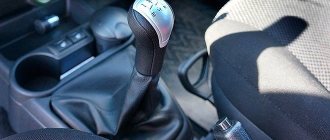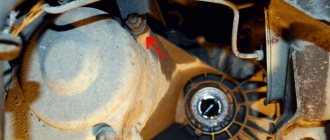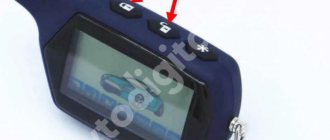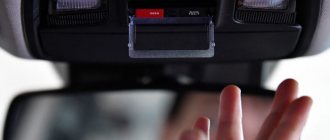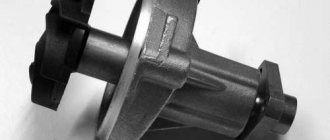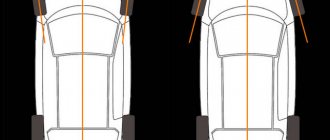Here you can get a discount on tires in Voronezh.
Monitoring the condition of your car is the responsibility of the owner or driver. Interaxle rearrangement of wheels is one of the types of maintenance. The rule of tire castling is not new and has been used by drivers for many decades. Moreover, the procedure is equally useful for cars and trucks.
In addition to maintaining the technical characteristics of the car's handling, owners are able to delay the purchase of new wheels. And thriftiness of the personal budget is encouraged by family members. Unfortunately, the commandment of castling tires is being forgotten. It is remembered at the moment of significant wear and tear.
How to swap wheels for even wear
Regular rearrangement of wheels according to different patterns (front - back, left - right and vice versa) can increase the service life of tires by 1.5-2 times, sometimes more. If the tires are worn out on one side and on the inside on the other, they need to be swapped.
This is an example of obvious wear visible to the naked eye, and the logic behind the replacement order is obvious. If nothing is done, the tires can quickly wear out, some on the inside, others on the outside or in the middle. Timely rotation of wheels will ensure even wear and will undoubtedly extend the life of the tires.
Can all tires be rotated?
What to do if the tires have an asymmetric tread pattern? For tires with Rotation, Inside and Outside indicators, only longitudinal castling is possible. You cannot throw tires diagonally. In this case, dismantling and trimming will not be required.
What to do if your car has different width tires? In this case, you can rearrange the rubber from one side of the axle to the other. But, provided that the tread is symmetrical and non-directional. Rearranging wheels according to standard patterns (from front to back and vice versa) is prohibited due to discrepancies in sizes,
How to change wheels on a car diagram
How to change wheels on a car diagram
For all-wheel drive and rear-wheel drive vehicles
The rear and front wheels are swapped, with the left ones being placed to the right and vice versa. Simply put, the replacement is carried out diagonally in the shape of the letter X.
For front wheel drive vehicles
The rear wheels are placed forward without swapping left and right. That is, the rear right wheel is installed instead of the front right one. But the front wheels are put back, swapping the left and right wheels.
Inclusion of a spare wheel in rotation
If all five tires were initially in the same condition, it is advisable to use a spare tire as a replacement. In this case, the spare tire is installed instead of the most worn wheel. If the wear is uniform, the replacement is carried out along the “conveyor belt” - according to the recommended scheme, but each time putting the left rear wheel into the spare wheel.
Thus, with regular replacement, all 5 wheels, including the spare wheel, will wear out evenly, and wear will slow down by 20%.
Wheel rotation schemes
The wheel rotation scheme will help make interchange effective. Before the procedure, it is recommended to mark each splint with a marker to avoid confusion. For each type of car, a specific interchange plan has been developed. Owners of front-wheel drive and all-wheel drive cars can use two options, and owners of rear-wheel drive cars can use one.
- Front-wheel drive - the wheels from the rear axle are moved to the front, not my side of the installation. The front ones are placed on the rear axle, changing their location from left to right along the central axis of the car.
- Rear-wheel drive and all-wheel drive - the wheels are swapped from the front to the rear axle - diagonally.
- Scheme with a spare tire - if you have a full-size spare tire of the same tire model, then the wheel must be included in the castling process. The sequence looks like this: first, the wheels are changed in the sequence of the diagram that the car corresponds to. Then, the spare wheel is installed on the rear axle on the left side, and the removed wheel is sent to the spare compartment.
If the car is equipped with wheels with an asymmetric tread (Rotation) and mounting side (Inner, Outer), then diagonal rotation is not possible. Only interaxle castling.
When is it necessary to replace wheels?
If the tread is clearly wearing away very quickly in one stripe, rotating the wheels will help even out the wear, but will not solve the problem.
“Narrow” tread wear occurs most often due to an incorrect camber/toe adjustment angle. The wheel is simply very inclined and is in contact with the road not with the entire plane, but with one narrow strip. In such cases, together with or instead of rearranging, it is recommended to correctly adjust the camber/toe angles.
Sometimes such accelerated wear may be due to suspension wear, which also requires diagnosis and elimination of failed suspension elements.
How much does it cost to rotate wheels?
The good news is it's inexpensive. This small investment comes back to you in the form of long tire life and continued vehicle safety and performance. In the long run, the cost of rotating your tires periodically will be only a fraction of what you would have to spend on new tires due to premature wear. Tire shops also often offer tire rotation services at a discount for regular customers or from time to time offer to do it for free. So contact the tire shop that installed your tires first - in some cases, your cost for tire rotation may be zero.
Helpful Hint: Don't forget to label your wheels with numbers and keep your tire rotation data and receipts. If you ever need to have your tires replaced under warranty, having these records will improve your chances of success.
How to swap asymmetrical tires
Rotating regular tires is easy. They can be deployed not only when replacing wheels, but also when beading onto disks in a tire shop. It is somewhat more difficult with asymmetrical and directional tires. Directional tires have an arrow indicating the direction of rotation. You need to rearrange such tires so that the arrow points in the opposite direction - it is absolutely forbidden.
Asymmetrical tires have a non-uniform tread, which differs significantly on the inside and outside. Moreover, the differences can be both in the tread pattern, which is different inside and outside, and in the properties of the rubber. For example, it may be softer on the inside.
Asymmetric tires are rearranged according to the same patterns as regular ones. The difference is that they cannot be flipped on the disk with the other side so that the inner side is on the outside.
Such tires are necessarily marked with several words, indicating the outer and inner sides. Words in English or the manufacturer's language may differ.
As an example: Side Facing Outwards (translated as “Side Facing Out”) and Side Facing Inwards (“Side Facing In”).
Rotating wheels using a spare wheel
This type of rotation allows you to extend the life of the wheels by about 20% , but in reality this method is almost never used: many modern cars either do not have a spare tire in the trunk at all, or use a small-sized “replacement tire” as one. And even if your car is equipped with a full-size spare tire, in practice it most often differs either in the tire model or the type of wheel. However, if the spare wheel is completely identical to the wheels installed on the car, then rotation in this case can be extremely useful. For ease of wheel replacement, the tread pattern type should be either asymmetrical non-directional or symmetrical non-directional. The rotation process in this case is no longer as obvious as in previous methods.
Is it possible to swap wheels with pressure sensors?
In most cases, pressure sensors immediately or after 2-3 km of run restore communication (are registered) automatically with any rotation of the wheels. Otherwise, problems would also arise during seasonal replacement of tires, which would become a problem for the owners and reputation of a particular brand.
From experience, sometimes it is necessary to inflate rearranged wheels to increased pressure values - 2.3-2.6, and then lower them to normal in order to restore the operation of the sensors.
In all cases, the most accurate recommendations are set out in the Operating Instructions for each specific car model.
Where can I buy good wheels?
You can buy alloy wheels, Replica wheels and car tires at affordable prices in the Spbkoleso online store. We deliver goods throughout St. Petersburg and the region, and also send goods to the regions with full prepayment of the order.
There are a lot of opinions about rearranging wheels. Some people believe that rotating wheels increases tire wear by 20%. Others are wary of rotating tires altogether, as they believe that rotating them hides the true degree of tread wear, wears out the shock absorbers, and harms the brakes. This is discussed in detail in the section “How to determine tire wear.” If the tires wear evenly and you haven't had the above problems very well, but if you do rotate them, first check to see if there are any problems that may have arisen since the last rotation.
Advice.
If you encounter difficulties in determining the direction of tire rotation, do not hesitate to consult specialists who will help you understand all the nuances and also provide more accurate information on this issue.
Approach the issue of installing tires competently and wisely, because your safety depends on it!
Source autoepoch.ru
The modern tire industry is creating its products better and better. Universal products are able to feel great on dry asphalt, drain water, provide traction, and in addition, provide acoustic comfort and reduce fuel consumption.
For modern cars, many sets are offered with a variety of treads and mixture compositions. This versatility has one drawback. The tread pattern differs between the halves of the tire. Therefore, there are Rotation, Inside or Outside marks on the tires, indicating the correct direction of rotation.
In this article we will talk about marking the direction of tire rotation, types of rubber, directional and non-directional tread patterns, and also tell you about all the pros and cons of such products.
Symmetrical directional tread pattern
Such tires are becoming less and less common in summer tire lines and are almost always winter tires: the V-shaped tread makes it possible to remove water from the contact patch as efficiently as possible. Thus, in the MICHELIN model range, CrossClimate summer tires and a number of winter tires (X-Ice North 3, Latitude X-Ice 3, Alpin 5, etc.) have a directional tread pattern. Rotation with directional tires installed on the rims can be done in only one way: by swapping the front and rear wheels, i.e., the front left wheel in place of the rear left one, the front right wheel in place of the rear right one.
Main hazards
Many motorists underestimate the danger of such damage and continue to drive the car.
It's actually very dangerous. Even a small side cut can lead to serious problems.
Everything is simple here. When a tire is cut on the side, damage occurs to the cord (the base of the tire) - its textile (metal) threads. Because of this, the product loses its rigidity and shape.
A hernia may also appear on the tire, and this phenomenon contributes to the emergence of a huge number of negative factors that affect driving safety.
When driving on such a wheel, the latter can explode when hitting a small bump, which will inevitably lead to an accident. The consequences can be worst.
Repairing such damage is a very difficult and thankless task, because it will still not be possible to restore the characteristics of the wheel even with minor damage.
The only thing that is acceptable is to use the “patched” tire as a spare wheel.
FakeHeader
Comments 12
At circuit races, the scheme probably makes sense.
For summer or what?! The ones that are better on the front you put on changing shoes and don’t worry.
There is one problem when moving wheels to the other side - in order to maintain the correct direction of movement of the tires, re-beading is necessary, which is very expensive. Well, if there is only one set of disks, then you can get confused. As for me, every season I change the front and back, but never the sides.


